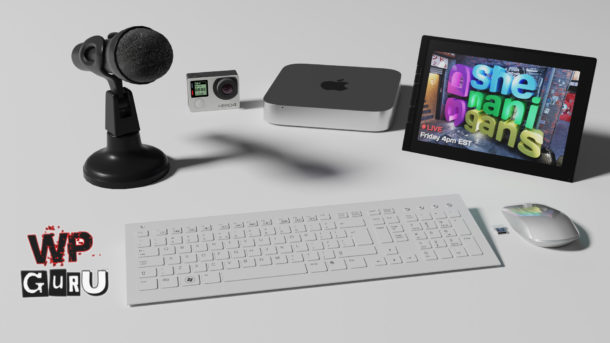
From time to time I get asked what hardware and GPU I’m using for my 3D adventures, including video games. Rather than typing it out every time, I thought I’d make a handy post that I can refer interested parties to, and update as my configuration changes.
This is that post.
It may contain more information than necessary, but I thought I’d add it all here, including a bit of history on how this setup came to be and what it cost. I keep this page updated as my configuration and workflow changes.
TL;DR
These are the main systems that I use for work and play. They run the Adobe Creative Cloud, games, 3D apps. Most systems are CAT-5 wired with a 1000Mbps connection.
Main Workstation / Presentation PC
- HP Z840 Workstation
- 2x Xeon E5-2670 CPUs (48 threads)
- 48GB of DDR-4 RAM
- 2x RTX 2080 GPUs
Streaming PC
- HP Z600 Workstation (Rev B)
- 2x Xeon x5675 CPUs (24 threads)
- 24GB of DDR-3 RAM
- RTX 3060 GPU
- Elgato HD60 Pro HDMI capture card
Render Node 1
- HP Z800 Workstation
- 2x Xeon x5675 CPUs at 3.07 GHz (24 threads)
- 48GB of DDR-3 RAM
- 2x GTX 970 GPUs
Render Node 2
- HP Z600 Workstation (Rev A)
- 2x Xeon x5560 – 2.80 GHz CPUs (16 threads)
- 20 GB of DDR3 RAM
- GTX 970 GPU
Email / Coding / Chat PC
- Apple MacMini 2012 Server Edition
- Intel Core i7CPU at 2.3 GHz
- 16GB of DDR-3 RAM
- Intel HD 4000 GPU with 1.5GB of RAM
The Longer Story
Most visitors are probably content with the info above. However, if you’re interested in how all this equipment came to be, and how I’m using it in my home/office, read on below. I’ll tell you how I acquired most of the parts and how I’ve built them from older technology that still packs quite a punch.